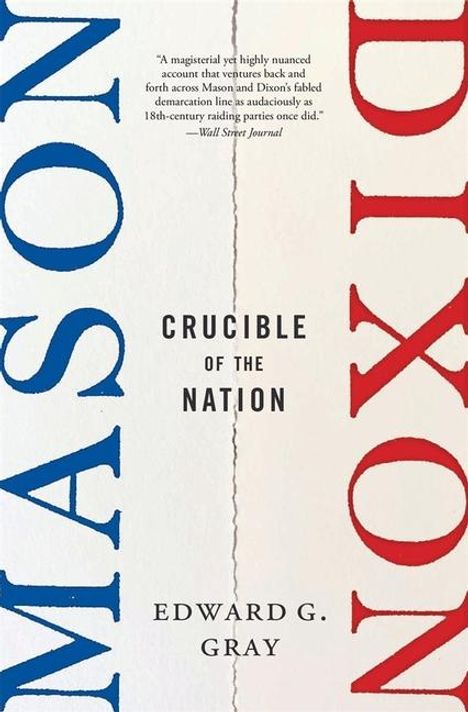Edward G Gray: Mason-Dixon, Kartoniert / Broschiert
Mason-Dixon
- Crucible of the Nation
(soweit verfügbar beim Lieferanten)
- Verlag:
- Harvard University Press, 10/2025
- Einband:
- Kartoniert / Broschiert
- Sprache:
- Englisch
- ISBN-13:
- 9780674301535
- Artikelnummer:
- 12270646
- Umfang:
- 456 Seiten
- Gewicht:
- 413 g
- Maße:
- 210 x 140 mm
- Stärke:
- 29 mm
- Erscheinungstermin:
- 7.10.2025
- Hinweis
-
Achtung: Artikel ist nicht in deutscher Sprache!
Klappentext
"Deeply researched and highly readable." -Eric Foner, Times Literary Supplement
"A rich history of regional distinctions, especially as they shaped the antebellum Republic." -Kirkus Reviews
"A fitting testament to a career marked by boundary-crossing curiosity and stalwart service to the historical profession...[a] splendid new history." -Richard Bell, Register of the Kentucky Historical Society
"Fascinating...does justice to the full sweep and complexity of American history by expertly tracing a century of change across one especially revealing patch of ground." -James H. Read, American Political Thought
"Erudite, gripping, and highly significant. Gray puts his talents as a historian of the American Revolution and the early republic to excellent use, persuasively arguing that the Mason-Dixon Line is worth seeing as a geopolitical border." -Kathleen DuVal, author of Independence Lost
Acclaimed scholar Edward Gray offers the first comprehensive history of the Mason-Dixon Line, a border at the center of early American political contestation. Formalized in 1767 to fully and finally demarcate Pennsylvania, Maryland, and Delaware, the Line resolved a longstanding jurisdictional conflict that had provoked bloodshed among colonists and ensnared Lenape and Susquehannock populations. In 1780, Pennsylvania's Act for the Gradual Abolition of Slavery inaugurated a new phase, as the Line became a boundary between free and slave states and their distinct legal regimes. Then, with the passage of the Fugitive Slave Act in 1850, the Line became a federal instrument to arrest freedom-seeking Blacks. Only with the end of the Civil War did the Line's significance fade, though it haunted the geography of Jim Crow.
Mason-Dixon tells the gripping story of colonial grandees, Native American diplomats, Quaker abolitionists, fugitives from slavery, capitalist railroad and canal builders, US presidents, Supreme Court justices, and Underground Railroad conductors-all contending with the relentless violence and political discord of a borderland that transformed American history.

